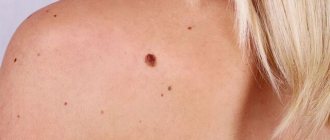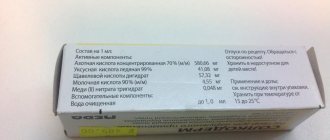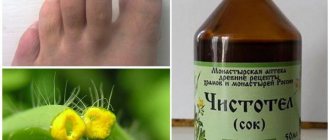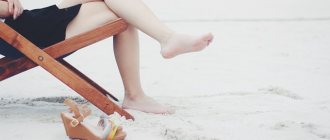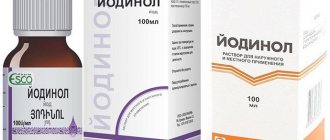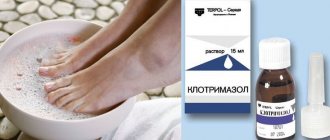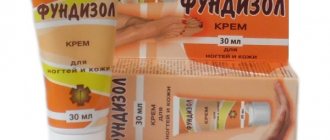The incidence of fungal nail infections is very high. According to a summary analysis of epidemiological studies in different countries, this is 5.5% of the total population. Risk factors include: diabetes mellitus, various immunosuppressive conditions, obesity, smoking, old age, certain professions, genetic predisposition, and hygiene defects. The spectrum of pathogens varies from country to country depending on the length of the season for wearing closed shoes. Countries with temperate and cold climates have a higher prevalence of dermatophytosis, while hot tropical countries have a higher prevalence of yeast infections (1). In general, mycosis of the nails is a chronic condition, the rate of progression of which is influenced by the health status of the patient's macroorganism.
People are designed in such a way that they begin to deal with problems when they see their importance and relevance, so with the question “How can I get my nails in order?” May be used more often in spring and summer. And with regard to damage to fingernails - all year round, taking into account the prevalence of long-term decorative nail coatings. In the era of gel polish, alas, this has become a significant problem, since technologically active chemical and thermal trauma to the nail plates occurs, and detachments of the nail from the bed are often formed, in which a variety of microflora find shelter (2).
Onychomycosis, dystrophic change in the nail after chemical and thermal trauma with repeated application of gel polish
All photos provided by the author of the publication
Chemical and thermal burn of nails after applying gel polish. Dark stripes are linear hemorrhages. Marginal bacterial-fungal process.
Rapid development of pseudomonas lesions of the nail after detachment of the nail plate against the background of chemical and thermal burns when applying gel polish.
The pharmacy range of antifungal agents is very wide - from external over-the-counter drugs to systemic antimycotics, of which only fluconazole at a dosage of 150 mg for the treatment of vulvovaginal candidiasis is available over-the-counter. Let's look at the issues that the first table often has to resolve.
Is it a good thing or a disservice to dispense a product without a prescription or doctor’s prescription?
Definitely a disservice. As a specialist, I understand that despite the obvious clinical picture, it is necessary to laboratory prove the presence of the fungus. According to world statistics, onychomycosis is the cause of nail changes in 50% of cases, in 15% it is caused by metabolic disorders and inflammatory conditions, in 5% of cases neoplasms in the area of the nail plate and pigmentary disorders are to blame.
For example, up to 40% of patients with psoriasis without joint damage have some kind of nail changes, and even more with joint damage. Among patients with contact eczema of the hands, changes in the nail apparatus are observed in 80%. Thus, what appears to be a fungal infection of the nail plate may be a manifestation of a completely different pathology. In the pharmacy, it is important to correctly set the route for the patient so that there is no residue left from ineffective treatment. After all, they will remember the pharmacist who sold the ineffective product, and not the fact that he strongly recommended visiting a dermatologist.
“Sandy nails”, dystrophic changes in the nails, and mycosis were excluded in the laboratory.
Nail psoriasis. Upon examination, mold flora was found. Such nail plates are especially attractive for colonization by various microflora.
Lichen planus of the nails, mold flora was found, but is not the main factor of pathological changes.
Lichen planus of the nails, fungi can be secondary, unfortunately, long-term inflammatory processes at the base of the nail affect the growth zone and nail restoration is difficult.
Getting tested for onychomycosis - how long will it take?
The fastest method for diagnosing mycosis is microscopy of skin flakes and pieces of nails, which must be correctly and in sufficient quantities taken from the lesion. After exposure to concentrated alkali, the keratin of the nail plate brightens, and the laboratory assistant describes what he saw. What I'm most looking forward to are the words - mycelium threads, although the abundance of spores is also an important diagnostic criterion. The result is usually ready in 3-5 days, but the doctor can prescribe therapy at the first appointment, which will either be approved or adjusted based on the results of microscopy. The material can also be taken for sowing, which takes up to 30 days to prepare and, due to the fact that mushrooms are quite capricious during cultivation, often gives a false negative result. It is also very important for us, dermatologists, that the patient comes to the scraping “naive”, and not freely using over-the-counter medications. After all, self-medication will increase the likelihood of a false negative test result.
How long should treatment last?
In cases of treatment of onychomycosis of the lower extremities, the general course of therapy often extends to 9-14 months, since toenails grow extremely slowly - 1 mm per month, and our goal is a complete change of the nail plate with constant exposure to antimycotics. Therefore, for me, as a dermatovenerologist, it is fundamentally important to confirm the diagnosis not by eye. After all, if there was no scraping, and the person decided to undergo treatment himself for aesthetic reasons, then after only 3-4 months of treatment, anyone can think: “was there mycosis?”, or maybe “I just crushed my nail” and abandon regular therapy.
I've run out of varnish, can I replace it with a cream with the same INN?
Great and relevant question! Drug developers and technologists are not trying in vain, and I have an unambiguous positive response to the variety of forms: solution, spray, gel, cream, ointment, varnish, powder, shampoo... Let's go through the differences in forms:
- solution - penetrates well into the internal structures of the nail plates, which means they get closer to the zone where the division of the fungus is most active
- spray - spreads well over the skin without making it greasy, can be used on areas with hair and replace the solution
- gel - also distributes well over the surface of the skin, can replace solution and spray, especially when a change in the active substance is necessary
- cream - a fairly universal form of release - moisturizes, softens dry areas, but penetrates worse than the solution into hard-to-reach, but fungi-infested nail cavities
- ointment - a fatty form for processes where it is necessary to soften layers and crusts. Ointment and cream are often replaced with each other, but this is not always adequate - ointment is not suitable for everyone
- varnishes are easy to use, but, in my opinion, their effect is devalued by the wrong choice of target group for therapy: varnishes are good to use for the prevention and treatment of superficial and initial forms of nail fungus, and not advanced ones, with which they most often run to the pharmacy
- powder is a valuable form for the prevention of relapses of mycoses of skin folds, including interdigital spaces
- Shampoo is indispensable for treating scalp lesions.
All these forms are very necessary in the portfolio of prescriptions, and there is even some shortage, since some INNs have a meager line-up. I only want the attending doctor to evaluate everything and prescribe what is needed, guided by research, expert opinion and common sense.
Onychomycosis of the feet requires combination therapy. Varnish with an antimycotic in this case is not the drug of choice.
Why is it important not to make analog substitutions (INN from the same group)?
Fortunately, we have moved away from the omnipotence of the “three pillars” of mycology of the 19th and early 20th centuries - iodine, sulfur and tar. Some modern drugs are used once a day, and some 2-3, and this already significantly affects the patient’s adherence to therapy. Of course, 1 is better than 3, but the doctor could also count on the softening effect of the cream base, for example, when the nail bed is dry. It is unacceptable to replace the recommended drug with combination drugs with corticosteroids, for example, “Candide” and “Candide B” - these are fundamentally different drugs, and replacement is impossible. You should not replace the antimycotic with iodine tincture or other third-party agents. Yes, yes, this also sometimes happens in pharmacies according to patients.
The combination of psoriasis and mycosis, therapy should be very balanced, the use of terbinafine orally can significantly aggravate the course of psoriasis.
How do dermatologists feel about nail scrapers? Is their use useful, pointless or dangerous?
If the scraper is plastic and is used on damaged nail plates, previously softened with urea compounds, then there will be benefit - reducing the thickness of the nail affected by the fungus opens up more opportunities for external antimycotics to reach the area where the fungus is actively dividing. If the scrapers are metal, I am against it, because the risk of causing significant damage on your own (injury to the side ridges, nail bed) is quite high, and then there is a high probability of becoming a patient of the surgeon. Diabetics and people with vascular insufficiency especially need to be on their guard.
What related products are appropriate to offer to a client who purchases drugs for the treatment of onychomycosis?
It is absolutely appropriate to offer high-quality shoe dryers, mentioning that drying them from the inside for several hours is much more effective than using radiators and heated floors. Also, do not forget to offer Mycostop hygiene spray for shoes with an antifungal effect to prevent relapse. To be honest, as a doctor, I would really like manufacturers to expand their portfolio of such products. Industrial pharmacies may offer extemporaneous 1% chlorhexidine solution. If fingernails are affected by fungi, it is important to disinfect gloves and mittens with the above-mentioned products, since spores may remain inside them. Customers may also be interested in products for disinfecting bathtubs, bathroom floors, and products that can be used to safely and effectively wash slippers, socks, bathroom and bedroom rugs.
What is important to warn the buyer of topical drugs about?
- It is necessary to start therapy after consulting a doctor
- It is important to follow the instructions and not overdo it with medications
- If you experience itching, burning or weeping of the skin when applying topical products, stop use and consult a doctor.
- The approach must be comprehensive. Local forms will not always be effective enough. For example, by treating nails only topically, patients neglect the treatment of the smooth skin of the feet and hands, but this is where the reservoir of the fungus often remains and subsequent re-infection occurs - from the skin of the nail ridges and interdigital spaces. It is important to focus the patient’s attention on the fact that combination treatment increases effectiveness. Such treatment includes: the use of systemic and local forms of antifungals, removal of nail masses modified by fungus with special pastes with urea in a high percentage (pharmacies have special mycological kits) or at an appointment with a special pedicure specialist
- It is a mistake to use varnishes in cases of total nail damage. A simple analogy that I give at the reception is like trying to fix a basement through the attic.
- It is imperative to use shoe treatment products to prevent relapses.
- Examination and treatment of loved ones with whom there are close household contacts, because the infection will return again and again.
Onychomycosis of the feet, traumatic chronic injury to the nail in shoes. Combination therapy is required - external and systemic, hardware pedicure or softening pastes.
Traumatic damage to the nail plate in shoes with tight toes while wearing gel polish. Reducing the area of growth of the nail to the nail bed. Areas of onycholysis are populated by bacterial (Pseudomonas aeruginosa) and yeast microflora.
What is important to warn the buyer of systemic drugs about?
Of course, that systemic medications are taken in accordance with the instructions and are not intended for self-medication. About the importance of restrictions on alcohol intake, about checking compatibility with all those medications that a person is already using. For example, terbinafine tablets can be metabolized through the same liver isoenzymes as tricyclic antidepressants, serotonin reuptake inhibitors, beta-blockers, and antiarrhythmic drugs, which requires caution when prescribing. The combined use of terbinafine with warfarin reduces the prothrombin time, which means the risk of thrombosis increases. When taken simultaneously with caffeine, the concentration of the latter increases by 19% due to a decrease in clearance.
Rifamipicin, used in phthisiology, can significantly reduce the effectiveness of antimycotic therapy with terbinafine and itraconazole. Itraconazole has a wide list of drug interactions, and there is room for expert pharmaceutical advice.
All medications that reduce gastric acidity, from antacids to proton pump inhibitors, can reduce the absorption of itraconazole, so the recommendations include a note in these cases to take the drug with cola.
Is it necessary to offer hepatoprotectors to patients using systemic antimycotics?
You should not do this yourself, since many older patients are already taking a whole range of drugs, and against the background of polypharmacy, it can be difficult to include both a systemic antimycotic and a hepatoprotector. According to clinical recommendations, the prescription of a systemic antimycotic is done after biochemical control at the start of treatment in the absence of contraindications. If there are changes, then a treatment plan is drawn up together with the therapist, keeping in mind the golden truth that the consequences of treatment should not be more severe than the disease itself.
In conclusion, I would like to thank the employees of pharmacy organizations for their joint work for the benefit of patients, for their desire to expand knowledge and significant educational work on the importance of treatment and prevention of onychomycosis.
We answer questions live on VKontakte: https://vk.com/pharmznanie
You can discuss the latest news with all your Russian colleagues in chats:
- Telegram: https://tglink.ru/pharmorden
- VKontakte: https://vk.me/join/AJQ1d_D2XxaDy9IdzL0e6EqH
To leave a comment on this article, you need to register or log in
- Gupta AK, Versteeg SG, Shear NH. Onychomycosis in the 21st Century: An Update on Diagnosis, Epidemiology, and Treatment. J Cutan Med Surg. 2017;21(6):525-539.
- Rieder EA, Tosti A. Cosmetically Induced Disorders of the Nail with Update on Contemporary Nail Manicures. J Clin Aesthet Dermatol. 2016;9(4):39-44.
Interested in the article? You can find out even more in the Expert Opinions section
Causes of fungus
The source of infection is a sick person. The fungus spreads due to the following risk factors³:
- close contact with a source of infection;
- contact with objects used by the patient (clothing, manicure instruments, shoes, carpets, socks, slippers);
- insufficient treatment of premises in gyms, saunas, swimming pools;
- small wounds and cracks in the interdigital spaces;
- long-term wearing of gel polish;
- minor skin trauma;
- the presence of concomitant pathologies: diabetes mellitus, psoriasis, varicose veins, obesity, lymphostasis, hypothyroidism, immunodeficiency (including due to HIV);
Figure 1. Causes of nail fungus. Image: Sonulkaster/Depositphotos
- chronic circulatory disorders;
- long-term use of glucocorticosteroids, cytostatics, antibiotics (drugs that affect the functioning of the immune system);
- elderly age;
- local injuries of the nail plates;
- wearing tight shoes;
- frequent contact with a damp and warm environment (favorable for fungal growth);
- anatomical deformities of the foot and hands;
- excessive sweating;
- harmful professional working conditions.
Nail fungus occurs 3 times more often in men than in women. In patients with psoriasis, the risk of nail fungal infection is 56% higher. The situation is not much better for people with diabetes - about a third of them suffer from manifestations of onychomycosis³.
Symptoms of fungal infection
Signs of fungal nail infection are:
- change in the color of the nail plate;
- excessive keratinization of the nail surface;
- roughness spreading over the entire area of the nail plate;
- spots under the nail;
- itching on fingers;
- redness of the cuticle and ridges;
- dry skin around the nail, accompanied by peeling;
- increased fragility of the regrown edge.
Irregularities in the nail plate can also occur as a result of injury. Before suspecting an infection, you need to remember whether there was a blow to the nail. In addition, inept cutting of the cuticle during a home pedicure can lead to the fact that the nail will not grow evenly, but lumpy.
Types of nail fungus
If we talk about the types of pathogens, then most often the nail plate is affected by the following types of fungi²:
- dermatomycetes Trichophyton: T. rubrum (90%), T. mentagrophytes, Microsporum gypseum, Epidermophyton floccosum;
- molds: Aspergillus spp., Scopulariopsis spp., Fusarium spp.;
- yeasts from the genus Candida: C. albicans, C. parapsilosis, C. guilliermondii.
Fungi of the genus Aspergillus.
Photo: Indian dermatology online journal / Open-i (CC BY-NC-SA 3.0) With onychomycosis, damage to the nail plate is of the following types²:
- Proximal. In areas of the nail located closer to the hand (proximally), white stripes and spots appear. They gradually increase in size, moving towards the edge (distally). If the causative agent is a mold fungus, concomitant periungual inflammation occurs.
- Distal-lateral. The infection penetrates from under the edge of the nail plate, turning it yellow-white. In response, the division of its own cells increases (hyperkeratosis) - the stratum corneum thickens. Over time, the compacted, loose areas begin to peel off from the soft tissues of the finger (onycholysis).
- Endonix. The nail becomes milky white and loses transparency, but no signs of hyperkeratosis or onycholysis are observed.
- White superficial. Small whitish spots (blotches) appear on the nail. The fungus vertically destroys tissue, as if “punching through” the layers of keratin. The plate begins to harden and crumble. The lesion often begins with the 1st and 5th toes, which are more susceptible to injury from shoes when walking.
- Totally dystrophic. The proliferation of a fungal infection affects all parts of the nail. The plate peels off from the bed. This type of course, in the absence of treatment, ends with any of the above.
Important!
The infection can spread to the surrounding skin (mycosis), although it usually affects only the nail itself. In rare cases, the fungus gets to the genitals. Therefore, if you have onychomycosis, it is recommended to put on socks first and then underwear.
University
→ Home → University → University in the media → Ointments alone cannot cure nail fungus
The head of the department of skin and venereal diseases of BSMU, associate professor Valentin Gavriilovich PANKRATOV, answered questions from Komsomolskaya Pravda readers on a “direct line”
— Dear Valentin Gavriilovich, I have several questions for you. Fungi affected my toenails about twenty years ago. At first they did not cause any concern, but over time the immunity weakened, the fungus spread to the fingernails, and then, as I understood, allergy problems arose due to the fungus. I realized that I needed treatment. And I would like to ask how effective are the medications that are widely advertised, and how much do they destroy the liver and disrupt its functions?
- Both terbinafines (exifin, lamisil) and intraconazole are generally quite well tolerated drugs because they have minimal effects on liver function. At the same time, they have a high degree of fungicidal activity, i.e. are able to stop the proliferation of pathogenic fungi in lesions and even lyse them.
“And the doctor told me that if you want to plant your liver, you can take them.”
- No it is not true. These drugs are not superhepatoxic, i.e. dangerous for the liver.
- But the treatment does not last a week or even a month.
— Yes, when taking systemic antimycotics, treatment lasts from 3 to 6 months. The older a person is, the longer he has to undergo treatment. Here is the order: for people under the age of 45-50, toenails grow in 3.5-4 months, on the hands - in 2.5-3 months. And with each next ten years, add another month to the treatment. Those. If a person is 80 years old, then his healthy nail will grow in 7-8 months. If you are concerned about the liver, then you can support it with hepatoprotectors, which will increase its resistance to pathological influences and various damages. In this capacity, you can use Legalon, Karsil, Essentiale Forte, Liv 52, and multivitamin complexes. But in principle this is not necessary if the liver does not bother you.
— Tell me, doctor, which method of treating fungal diseases on the nails is the most effective?
— The most effective is combination treatment. Today, onychomycosis (what you call nail fungus) is treated with systemic medications that the patient takes orally, but to speed up the process there are also hardware cleaning, plasters, and varnishes that are applied to the nails. Onychomycosis is curable in almost 100% of cases. All you need is time, money, the desire to heal and diligence.
— Why is fungus dangerous, besides aesthetic problems?
— Mycoses on the nails are a source of allergies, which creates other problems in the body. Pathogenic fungi can cause a variety of changes in the immune system.
- Then we will treat. Thank you.
- Doctor, hello. Tell me how to treat foot fungus?
“It’s not that difficult with modern tools available.” Today we have a large selection of both system therapy and local treatment. Is it only your skin that is affected?
- Yes, the skin between the fingers.
- In this case, you can limit yourself to creams, ointments or lotions. Among the most effective are terbinafine preparations. But in general it is better to visit a doctor and consult with him. No doctor has yet learned how to treat over the phone.
— I served in the army and got a fungus. How can I find out what is the best way to treat it, otherwise it’s already scary to look at my nails.
- If the nails are affected, systemic therapy cannot be avoided. I would advise you to go to a medical and veterinary dispensary, undergo a mycological examination and get a fungal culture to find out the causative agent of the disease. Each type of mushroom has its own key antimycotic drug that works best. If it is candida, then fluconazole will work best; if trichophyton is red, then drugs from the terbinafine and itraconazole group will work better. So see your doctor. But there will be no problems with the medicine - if only there was money.
- Are you hosting the reception?
— Yes, every Tuesday at the city dermatovenerological dispensary on Prilukskaya, 46a, room 33, on a first-come, first-served basis from 9 a.m. to 12 p.m. In addition to me, professors N.Z. Yagovdik, L.G. Barabanov and other associate professors of the department of skin and venereal diseases of the medical university consult on Wednesdays and Thursdays at the skin and venereal dispensary. No one will refuse you admission, come. We do not charge money for consultations.
— Good afternoon, my name is Sergei Leonidovich, I am 49 years old. I have fungus on my nails. They say the most effective remedy is terbinafine. But I know that it is very expensive.
— If you have nail damage from trichophyton red, then indeed, the most effective drug is terbinafine. There are several preparations of terbinafine. They are identical in action, but different in price. You are probably using the most expensive one. But if one tablet of Lamisil, according to Pharmaservice, costs 5 thousand rubles, a tablet of Terbizil costs 3.5 thousand, then a tablet of Exifina costs just over 2 thousand rubles. You can also be successfully treated with itraconazole (orungal), a tablet of which costs 4,500 rubles.
— How long does it take to be treated?
- At your age, at least 3-4 months.
- Thank you.
— They are bothering me from the Mogilev region.
- All attention.
— Please help me get rid of fungus on my nails and peeling on my heels. I smeared my feet with different ointments for three months - almost no effect. Tell me honestly, is it possible to get rid of this infection?
— Ointments alone cannot cure nail fungus. Both systemic and local therapy are needed. If you are treated only with systemic agents, i.e. take pills - I give an 86-88% guarantee that you will be cured. If you add local treatment, i.e. plasters, varnishes or mechanical (hardware) nail cleaning, then there is a 98-100% guarantee that you will be cured.
“My friends are scaring me that I’ll have to have my nails removed.”
- Today, removing the nail is the last measure we resort to. The maximum that can happen in particularly advanced cases is to remove the affected part of the nail. But believe me, it is absolutely painless.
- Hello, Doctor. I have this problem. My sister's husband infected his sister with a fungus. I often vacation there with my grandson and am very afraid of getting infected.
- It is enough to follow basic hygiene rules - and the fungus will not touch you. All family members must have individual slippers, shoes, and towels. Before taking a bath or shower, if someone was there before you, it is not enough to simply rinse the bath - you must wash it with detergents.
— Is it necessary to use antifungal creams for prevention?
- No one can oblige you, but it would be nice.
- Another question. When I wash dishes with detergent, something like an allergy appears between my fingers.
“Most likely, these are candidal lesions of the interdigital folds, the so-called “housewives’ disease.” This is a fungal disease, for the treatment of which today there is a wide choice of medicines. You can use terbinafine creams (trade names of the drugs - exifin, lamisil), fluconazole. In terms of effectiveness, all terbinafine drugs are almost equal; choose the one that is affordable for you.
— Tell me, how can I find out if I have a fungus or not?
- What are the symptoms?
“I have these cups that have formed on my feet, they are peeling.
- Yes, it looks like mycosis. I would advise you, before it’s too late and the fungus has spread to your nails, to use antifungal creams. Better yet, consult a doctor, he will clarify the diagnosis and select the optimal drug for you.
— And one more question, if I may. My mom's heels are always cracking. How can this be cured?
— Most likely, the skin of your mother’s feet was infected with the fungus red trichophyton. She may need to resort to systemic therapy with terbinafine or itraconazole. Let him consult with a dermatovenerologist.
- Good afternoon. I would like to know what is the best way to treat ear fungus?
— I would recommend that you work systemically: take tablets inside and use ointments externally against this background. Your doctor will best tell you which pills to take in person, but as for ointments, I can recommend exifin. But it is better to use ointments together with tablets.
— Valentin Gavriilovich, my son has been taking exifin for three months, but his nails still look unsightly.
- And you go for an examination, and the doctor will tell you if there is a result. Terbinafine preparations, one of which is exifin, are quite effective antimycotics. The peculiarity of their action is that they quickly accumulate in the nail bed and nail plate and displace the fungus. I think your son is growing a healthy nail at a low rate and has not cleaned the affected part of the nail plate, which is masking this growth. You need to clean your nails.
“We didn’t think about that.” Thank you.
— Doctor, we have been cured of the fungus. I won’t remember how much money was spent. Now I'm worried about how to avoid getting infected again. What should we do with the shoes that most likely caused the infection?
- You are absolutely right in being afraid of getting infected again, especially if you use the same shoes. Fungal spores persist for months. You should treat your shoes with formaldehyde or vinegar. Formaldehyde is sold in pharmacies, and I think every housewife has vinegar. This is done like this: put on rubber gloves, take a piece of cotton wool, soak it in the solution, wipe the inside of the shoes, put it in a plastic bag, tie it with a tampon soaked in formaldehyde, and put it in a warm place for a day or two so that evaporation occurs. You will get a kind of steam-formalin chamber at home. After 24-48 hours, the fungus will only be an unpleasant memory.
- Thank you. Natalia KRIVETS Komsomolskaya Pravda , September 3, 2013
Share
Classifications of antifungal drugs
For treatment, antimycotic drugs are used that eliminate the cause of the disease - fungi. Therapy can be local (the drugs are applied directly to the affected area) and systemic (antifungal drugs for oral administration).
To treat nail fungus, the following groups of drugs are used:
- local antimycotics (available in the form of ointments, varnishes, lotions, creams;
- systemic antifungal agents (capsules, tablets);
- multicomponent drugs (a combination of an antimycotic with an antiseptic, antibiotic and/or anti-inflammatory substance);
- antiseptics (have a general antimicrobial effect);
- antihistamines (for severe itching).
If necessary, drugs are combined with each other. If drug treatment does not give the desired effect, the nail is removed surgically, chemically or mechanically¹.
In local treatment of onychomycosis, the affected parts of the nail are first removed, and then antimycotic agents are applied. They create a fairly high concentration of active components on the surface of the plate, but may not reach the nail bed (where the most viable fungi are located). Therefore, for deep damage, therapy is always combined.
Fluconazole is an antifungal agent
The popularity of the drug is due to the low price per package, which does not in any way affect the effectiveness of the drug. Fluconazole is prescribed for the following indications:
- damage to the lungs and central nervous system by yeast fungi;
- candidiasis, better known as thrush in women;
- fungal infections of the skin and nails;
- lichen.
The tablets can also be used by men. They are effective in cases of frequent candidiasis of the genital organ, when a topical cream does not give the desired result.
The manufacturer lists possible side effects as:
- itching on the skin;
- pain in the digestive organs;
- inflammatory processes in the intestines.
Treatment for nail fungus is long-term. It can be canceled only when a completely healthy nail plate has grown. Depending on the individual characteristics of the body, this period can range from 3 to 6 months.
TOP 15 drugs against nail fungus
The doctor selects the duration of the course of treatment and the dose size individually for each patient. You should not use antifungal drugs on your own due to the risk of severe side effects.
Top remedies for toenail fungus include¹:
Terbinafine
An effective antifungal drug that works best against dermatophyte species, less so against yeasts and molds. Available in the form of spray, dermgel, solution, ointment, tablets.
Contraindications and special instructions. Severe liver and kidney diseases, tumors, pregnancy, lactation, childhood, individual hypersensitivity. Treatment with terbinafine is periodically accompanied by side effects (pain in the upper abdomen, loss of appetite, unpleasant taste in the mouth, diarrhea, allergic reactions).
Ketoconazole
Well absorbed when taken orally. Suitable for local and systemic treatment of onychomycosis.
Contraindications and special instructions. Prohibited during pregnancy, breastfeeding, severe diseases of the pituitary gland and adrenal glands. Use with caution in patients with impaired renal and liver function. When taking tablets orally, diarrhea, nausea/vomiting, and skin itching may occur. Occasionally, treatment is accompanied by headache, dizziness, and drowsiness. Rarely - toxic effects on the liver.
Miconazole
Antifungal drug, imidazole derivative. Used in the form of cream or ointment. Local application practically does not lead to absorption of the substance into the blood.
Contraindications and special instructions. Do not use if you are hypersensitive to miconazole or other components of the product. Side effects are rare and are usually limited to allergic reactions and skin inflammation at the site of application. Avoid getting the drug on open wound surfaces and eyes.
Be careful not to get the anti-fungal medication in your eyes or on the wound. Photo: phanuwatnandee / freepik.com
Naftifin
Active against most fungi pathogenic to humans. Has weak antibacterial and anti-inflammatory properties. It is used externally in the form of a cream and solution.
Contraindications and special instructions. Side effects are limited to local skin reactions (burning, itching, dry skin) and are completely reversible. Naftifine should not be used during pregnancy or breastfeeding, or if you are allergic to any components of the medication.
Itraconazole
An antimycotic drug that is active against most pathogenic fungi. Available in capsule form for oral administration.
Contraindications and special instructions. Prohibited for patients with allergies to azoles, during lactation and pregnancy. Use with caution in the elderly, with renal and/or liver failure, as well as in women of childbearing age due to the possible effect on the menstrual cycle.
Fluconazole
Has a pronounced antifungal effect. Active against dermatophyte and yeast fungi. Course application only.
Contraindications and special instructions. Prohibited for pregnant and lactating women, children under 16 years of age. May enhance the effect of anticoagulants and hypoglycemic agents.
Important!
The duration of antifungal therapy depends on how quickly the nail grows. The normal growth rate “from scratch” is 4-6 months on the arms, 12-18 months on the legs.
Levorin
Active against yeast fungi and some protozoa. Almost not absorbed from the digestive tract. It is used for confirmed candidiasis externally or internally (tablets).
Contraindications and special instructions. Taking pills occasionally causes loss of appetite, nausea, vomiting, diarrhea, and allergic reactions. Contraindicated in case of renal or liver failure, gastric and duodenal ulcers, pregnancy.
Flucytosine
Indicated for severe candidal infections. Active against pathogens of cryptococcosis, chromoblastomycosis, aspergillosis. Release forms: injection bottles and tablets.
Contraindications and special instructions. It is not recommended to use in case of chronic kidney damage or hypersensitivity to the components of the drug. Used to a limited extent in patients with blood diseases.
Ciclopirox
Antifungal agent for the treatment of superficial onychomycosis. Included in special varnishes for topical application to nails.
Contraindications and special instructions. The safety of ciclopirox has not been studied in pregnant and lactating women, as well as children under 10 years of age. The main side effects are allergic reactions.
Therapeutic nail polish. Photo: kukuruzaphoto / freepik.com
Amorolfine
Well suited for both treatment and prevention of fungal nail infections. The product is applied to the cleaned nail surface in the form of regular varnish.
Contraindications and special instructions. Side effects are rare, but the possibility of allergic phenomena cannot be ruled out. Can be used together with decorative nail polishes.
Chloronitrophenol
A substance with antifungal and antibacterial effects. The affected areas are treated with the drug several times a day until the symptoms of infection completely disappear.
Contraindications and special instructions. When applied topically, irritation and an allergic reaction are possible. Dispensed from a pharmacy without a doctor's prescription. Prohibited during pregnancy and lactation.
Hydrocortisone+Natamycin+Neomycin
Ointment with a combined composition. In addition to the antifungal substance, it includes a broad-spectrum antibiotic and an anti-inflammatory drug (glucocorticosteroid). It is used for severe lesions complicated by a secondary infection.
Contraindications and special instructions. Adverse reactions are rare and completely reversible. Do not apply if you suspect skin tuberculosis, syphilis, or viral infections. Contraindicated during breastfeeding and pregnancy.
Betamethasone+Gentamicin+Clotrimazole
Combined preparation for external use in the form of ointment or cream. It has a local antifungal, antibacterial, anti-inflammatory effect.
Contraindications and special instructions. Do not apply to damaged areas of skin if syphilis or tuberculosis is suspected. Use with caution in children and pregnant women if the likely benefits outweigh the potential risks.
Bifonazole
Quickly penetrates into the affected areas of the nail plate and skin. Almost not absorbed into the bloodstream. Maintains high concentration on the surface for up to 48-72 hours. Used to remove nails affected by fungus.
Contraindications and special instructions. May cause redness, irritation and itching of the skin around the nail. Contraindicated in case of hypersensitivity to the active substance.
Clemastine
A drug with antiallergic action, which is often included in complex treatment regimens for severe onychomycosis. Used orally, intramuscularly or intravenously. Has a pronounced antipruritic effect.
Contraindications and special instructions. Cannot be used if you have bronchial asthma, pregnancy, lactation, or taking certain antidepressants (monoamine oxidase inhibitors). Prescribed with caution to patients with peptic ulcers, pathologies of the prostate and thyroid glands, as well as diseases of the cardiovascular system.
Terbinafine – for foot fungus
Terbinafine is a drug that actively prevents the spread of several types of fungi:
- Trichophyton;
- Microsporia;
- Athlete's foot.
The active substance destroys the membranes of fungal cells, which makes its vital activity impossible and leads to the rapid death of the entire colony.
The drug is produced in the form of tablets, which are intended for oral administration. The product justifies its high price due to proven effectiveness in relation to:
- fungal infections of unknown etiology;
- ringworm;
- fungal infection of the feet;
- fungal infections of internal organs.
However, this remedy is not without side effects. Among them:
- hives;
- anaphylactic shock;
- Quincke's edema;
- dizziness;
- change in taste perception;
- increased inflammatory processes in the joints.
Any side effects are the result of violation of the recommended dosage. In addition, individual intolerance to the components of the drug is the main contraindication to its use. Terbinafine is also contraindicated for pregnant and lactating women.
Sources
- Federal clinical guidelines for the management of patients with mycoses of the hands, feet and trunk. Moscow. 2015.
- Educational and methodological manual for postgraduate education “Fungal lesions of the nail complex. Principles of therapy". Edited by Professor, Doctor of Medical Sciences head Department of Dermatovenereology FSBEI HE "KubSMU" of the Ministry of Health of Russia Tlish M. M. Krasnodar, 2016
- Lykova S., Nemchaninova O., Spitsyna A. ONYCHOMYCOSIS: TREATMENT AND PREVENTION // Doctor. 2016. No. 3.
- Leung AKC, Lam JM, Leong KF, et al. Onychomycosis: An Updated Review. Recent Pat Inflamm Allergy Drug Discov. 2020;14(1):32-45.
